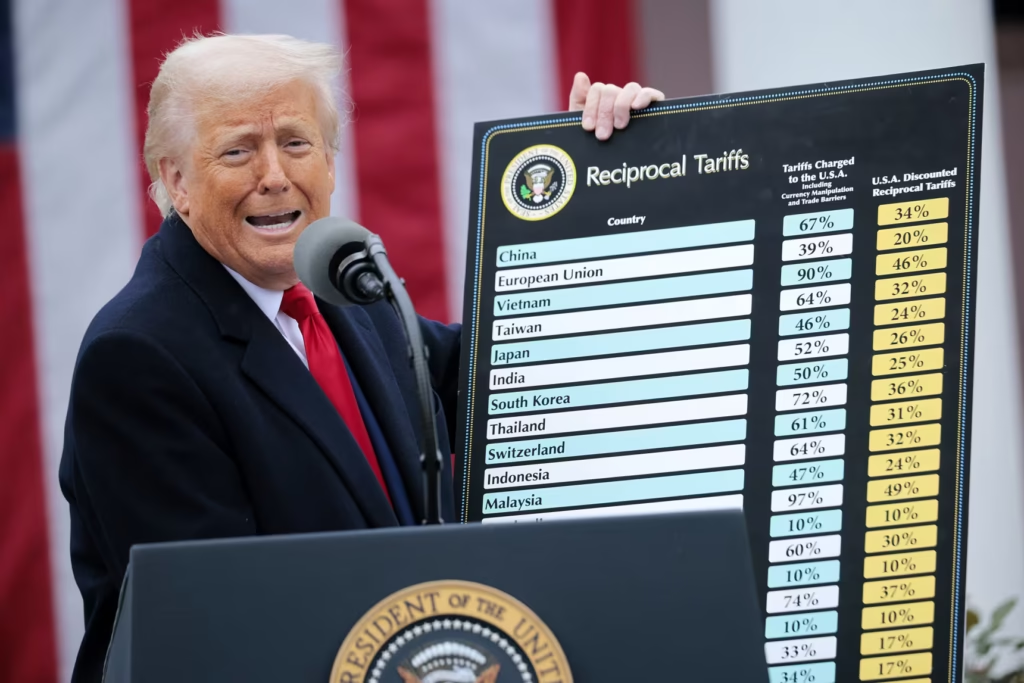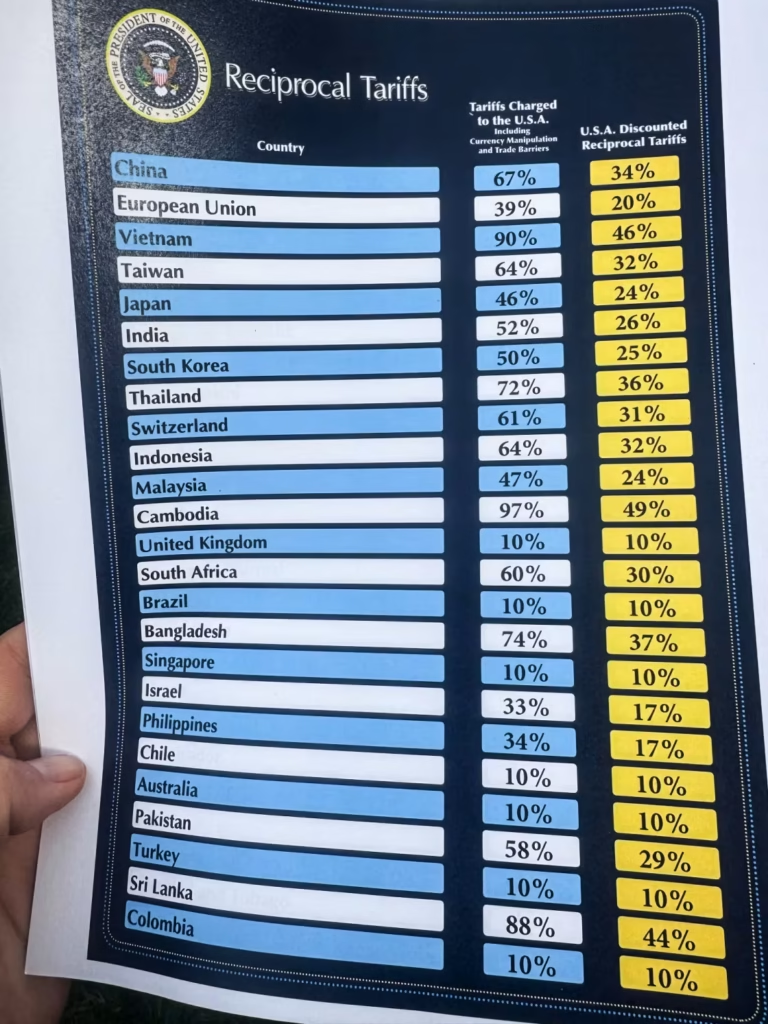President Donald Trump announced extensive tariffs on the United States’ largest trading partners on Wednesday, marking a historic shift in global trade policy. The new measures, which include tariffs as high as 54%, aim to overhaul trade relationships and strengthen American industry.

The tariffs apply to countries imposing significant duties on American exports or engaging in “nonmonetary” trade practices, such as currency manipulation or environmental practices that disadvantage the U.S. market. China faces the steepest tariff at 54%, while the European Union, India, and Japan are set to face tariffs of 20%, 26%, and 24%, respectively.
The White House did not detail the calculation method, but a handout listed factors such as “currency manipulation and trade barriers.” The sweeping tariffs could impact billions—if not trillions—of dollars in trade, raising concerns over global economic fallout.
The announcement immediately rattled markets, causing U.S. stock futures to plunge 1.5% in after-hours trading. Speaking from the White House Rose Garden, Trump criticized countries imposing “much higher” import taxes on American goods compared to U.S. tariffs on their exports. He declared the new policy a step toward a “golden age of America,” promising to restore American industry and end decades of perceived exploitation.
The move is part of Trump’s effort to challenge longstanding trade agreements and reduce U.S. dependency on foreign manufacturing. However, experts warn the tariffs could backfire by disrupting supply chains and driving up consumer prices. Businesses reliant on imports may face higher costs, potentially forcing them to reduce profit margins or pass the costs to consumers.

The tariffs come amid growing concerns over inflation, with the Federal Reserve adjusting its forecasts in anticipation of rising costs. A recent University of Michigan survey found consumer inflation expectations at a 32-year high, with two-thirds of respondents expecting unemployment to rise.
Critics argue Trump’s strategy risks harming American consumers and businesses more than it benefits them. Michael Strain of the American Enterprise Institute noted that many were surprised Trump followed through on his aggressive tariff rhetoric, leading to confusion and disappointment among business leaders.
Despite potential economic turbulence, Trump remains resolute. He contends the tariffs will force trading partners to negotiate fairer deals and reduce America’s trade deficit. While some countries, including Vietnam and Israel, have signaled willingness to lower duties on U.S. goods, others remain defiant.
With markets uncertain and inflation looming, the long-term impact of Trump’s tariffs remains to be seen. The administration insists short-term pain will pave the way for a stronger, more self-sufficient economy. However, critics fear the strategy could weaken global trade and stifle economic growth.



